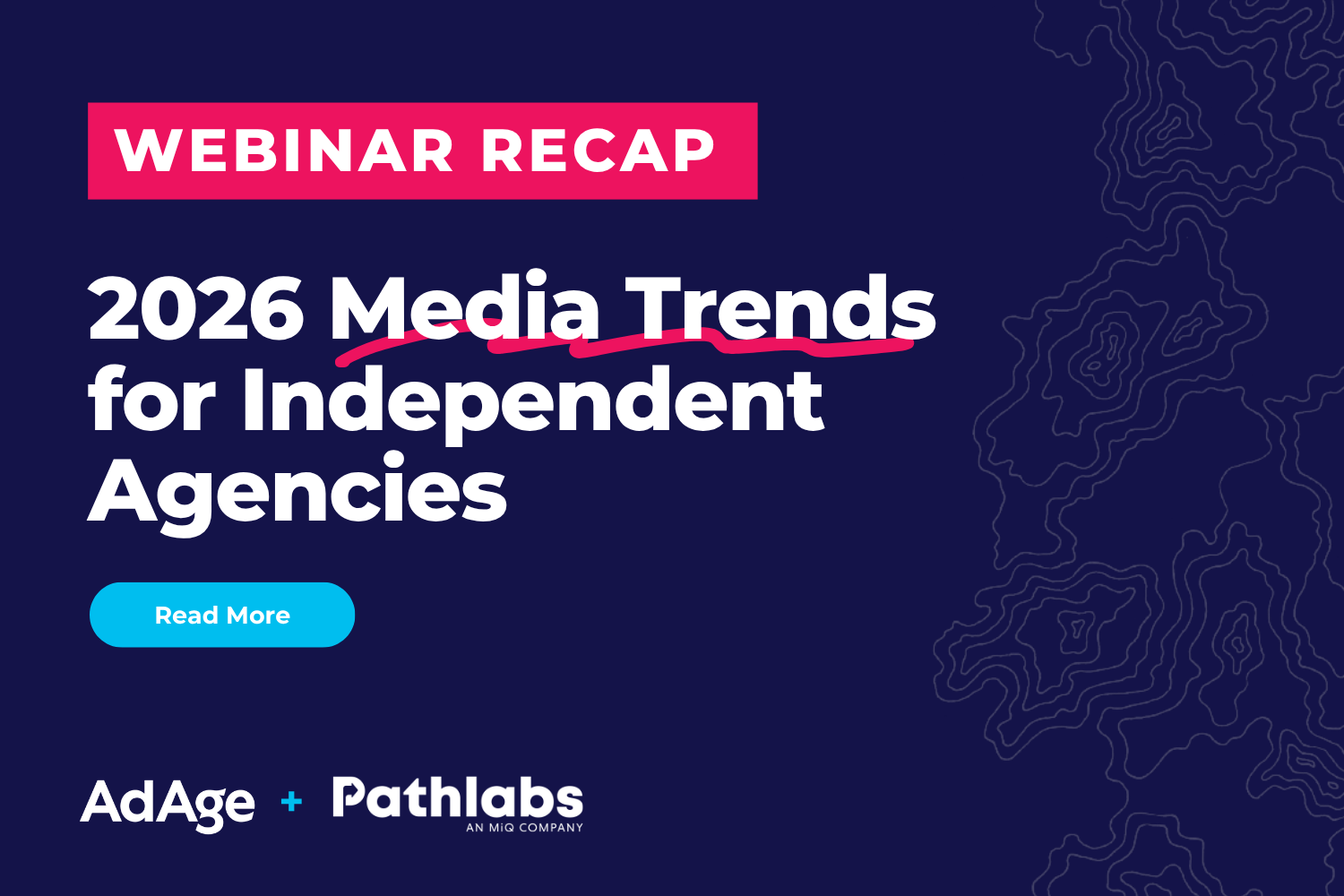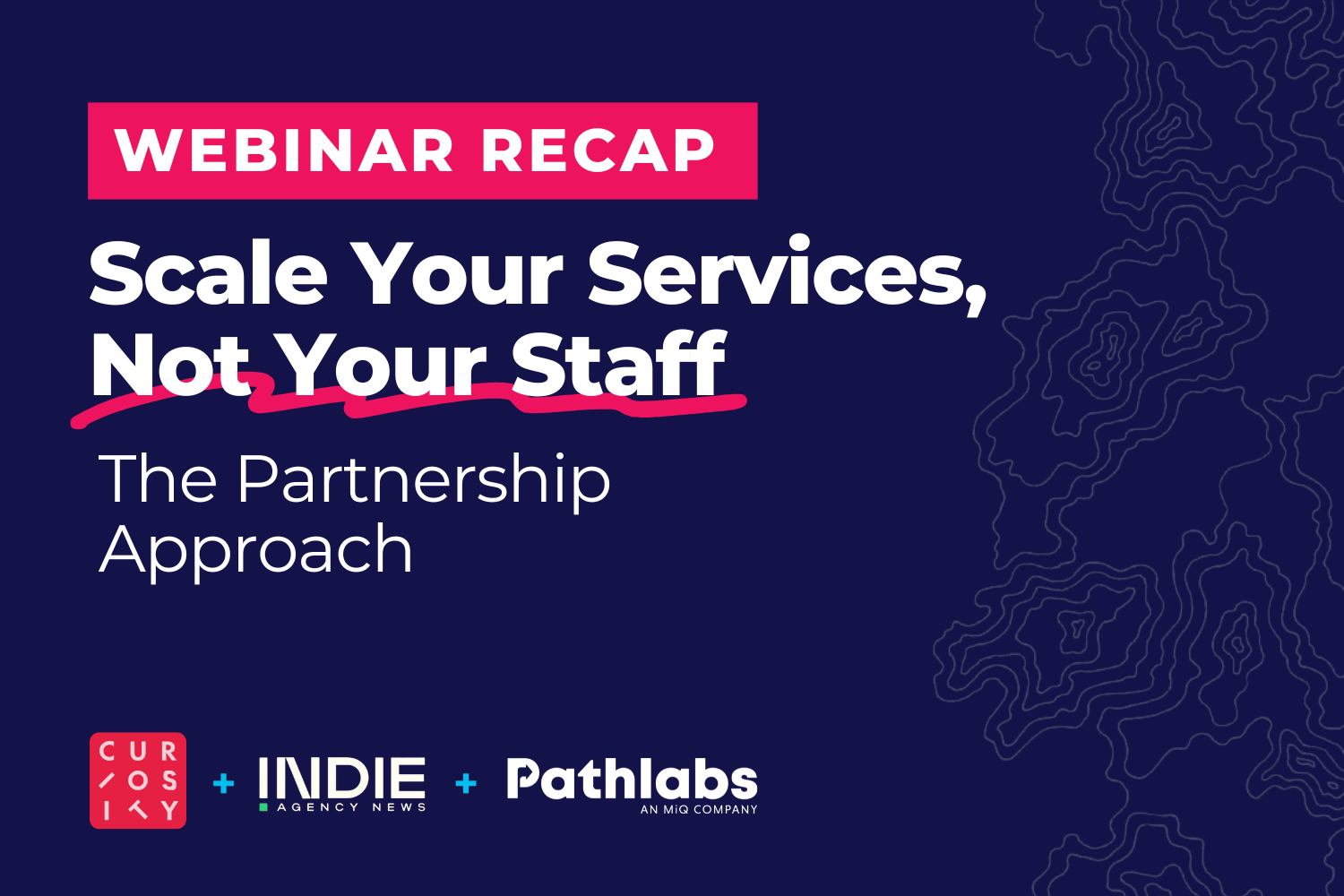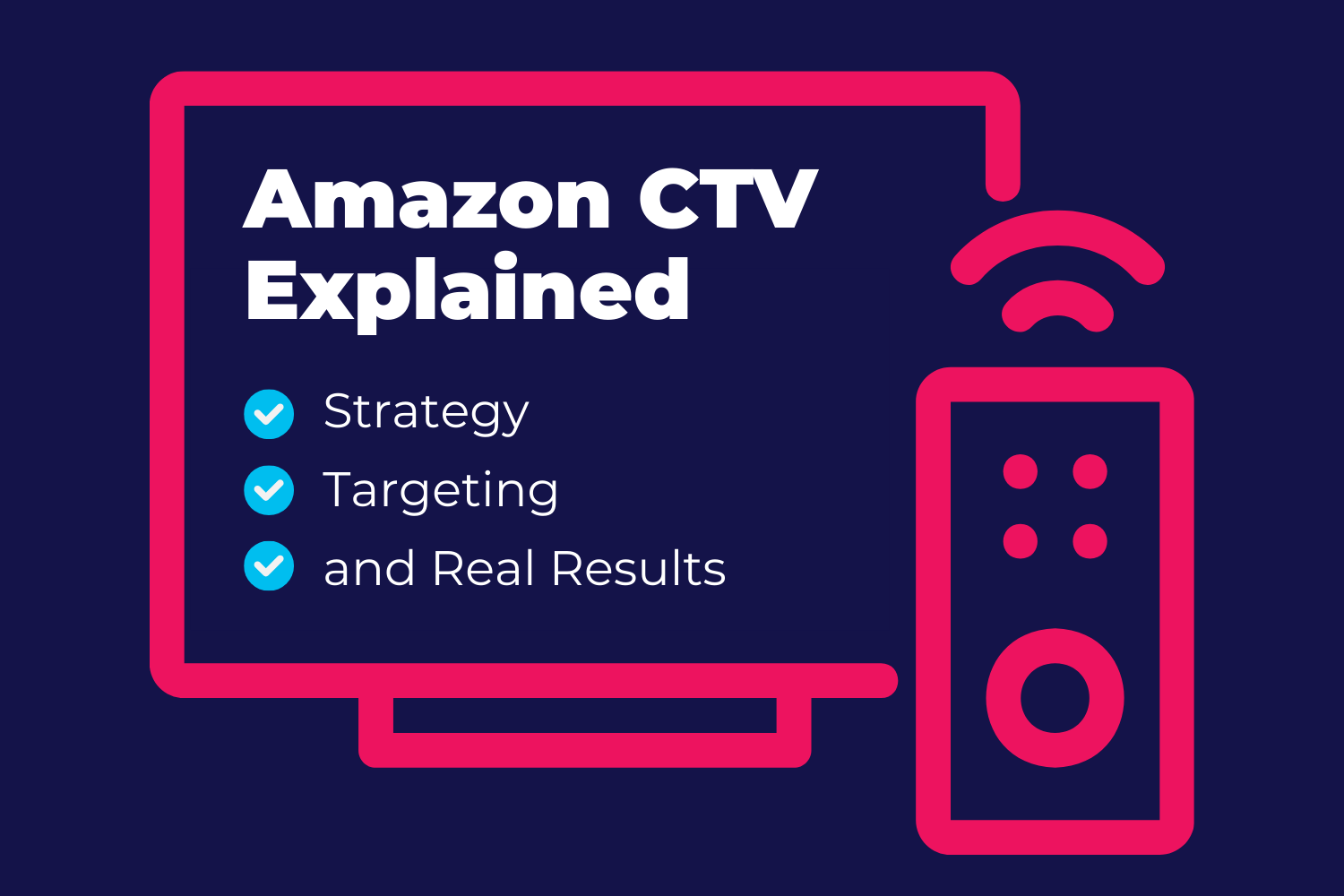Personalized Advertising: What Are Personalized Ads?
| Pathlabs Marketing |
| September 25th, 2024 |
Every digital media team executing paid media campaigns, whether for a brand or another entity, has a specific audience in mind. In short, their goal is to personalize their campaigns to align targeting and messaging with the ideal users they aim to reach and engage with their ads.
How they do so, however, can look many ways. In this blog, we further explore the concept of personalized advertising, the tactics used to execute it, the benefits it offers, and, of course, the limitations that come with it.
What Is Personalized Advertising?
Personalized advertising involves a range of tactics aimed at tailoring advertising campaigns to make them more relevant to the end users who see them.
At its core, personalized advertising is closely tied to data-driven audience targeting, which has become a central approach in digital media and advertising today.
Personalized advertising affects both the users who encounter the ads and the digital media teams responsible for executing the campaigns. Let’s explore how personalized advertising impacts both these parties:
Personalized Advertising from a User Perspective
For end users—the individuals targeted by ads—personalized advertising means that the ads they encounter online are more relevant to their personal characteristics, interests, and behaviors.
As users browse websites, social media platforms, and apps, they generate data related to their demographics, geographic location, interests, and browsing patterns.
Ad-buying platforms and multiple AdTech tools collect these data points and assign unique identifiers to these users. These systems then use the data to determine which ads to serve to the users moving forward.
For example, Meta tracks user activities and behaviors across its platforms, such as Instagram and Facebook. As users continue scrolling through their feeds, Meta’s algorithms dynamically select ads to serve based on the personal data it has gathered about them.
This process creates a more personalized ad experience, ensuring that the ads users see align closely with their online activities.
Personalized Advertising from a Digital Media Team Perspective
For digital media teams, performing personalized advertising primarily means executing campaigns that target data-driven audiences on channels including display, native, online video, OTT/CTV, paid search, paid social, and more.
To implement personalized advertising, media teams use ad-buying platforms like The Trade Desk, Google Ads, and Meta Ads Manager – to name a few.
These platforms offer a plethora of data-driven audience segments – tied to identifiable users – that teams can target. Teams can also incorporate their own first-party data lists, build lookalike audiences, and use tactics like pixel-based retargeting. Overall, this creates a more personalized targeting and advertising strategy.
How Personalized Advertising Works
Digital media teams execute personalized advertising by first analyzing the data they’ve collected about their target audience and identifying the types of users and key personas they want to reach. Based on this analysis, they create and launch their campaigns.
As mentioned, personalized ad campaigns are typically executed using ad-buying platforms such as The Trade Desk, Google Ads, Meta Ads Manager, and Amazon Ads – among others. These platforms allow teams to target highly specific, data-driven audience segments across various verticals and industries.
To maximize effectiveness, teams often create multiple targeting groups aimed at these different segments. They then tailor the ad copy and creative content to match the distinct personas and user segments they are engaging with.
The key advantage of personalized advertising is the ability to move beyond broad audience targeting with general messaging. It allows digital media teams to focus on more granular, data-driven audience segments. As a result, advertisers are ‘personalizing’ their campaigns, trying to reach specific users, while in turn, users have a more relevant and tailored ad experience.
Benefits of Personalized Advertising
Increased Engagement Rates
By personalizing campaigns through targeting ads to relevant, data-driven audiences—especially using the pre-built audiences available via ad-buying platforms—digital teams can significantly increase the likelihood of engaging users who are more inclined to interact with their content.
Higher Conversion Rates
Similarly, when users are served ads that align with their demographic, geographic location, behaviors, and interests, they are far more likely to engage and convert. Especially if teams tailor and personalize their ad copy and creative content to align with the corresponding segments and audience parameters they set to target.
Improved ROAS
Advertising investments can feel uncertain when targeting broad audiences with generalized targeting messaging. Personalized advertising reduces this risk by delivering ads to more relevant and specific audiences. This overall contributes to increased chances of achieving a better return on ad spend (ROAS).
Types of Personalized Advertising
Digital media teams can personalize their ad campaigns in multiple ways:
Demographic and Geographic Personalization
On most ad-buying platforms, advertisers can target users based on demographics such as age, gender, job title, or income, as well as geographic areas, adjusting the focus as needed. Additionally, the digital media team can tailor the ad copy and creative content they serve to resonate better with the selected audience based on these factors. This is a simple form of personalization, yet teams almost always account for it when executing digital media campaigns.
Interest and Behavior-Based Personalization
Ad-buying platforms enable advertisers to select different audience segments based on users’ interests and behaviors—data that is tracked, collected, and categorized by the platforms and AdTech systems. Platforms like The Trade Desk, Meta, and emerging retail media networks (RMNs) offer highly granular audience data segments for this purpose.
For example, advertisers can target users based on life events (e.g., becoming a parent, looking for a car), specific product interests, or actions like searching for certain terms, viewing products, or abandoning items in their cart.
This creates a personalized experience for the user, for based on the actions they take and the data they generate, they will see ads that align accordingly.
Pixel and Retargeting Audience Personalization
Digital media teams can implement tracking pixels on a brand or entity's website. These pixels track user actions on the site and create audience segments that can be targeted and retargeted with ads across websites and on platforms like Meta, Pinterest, etc. This approach enables advertisers to serve ads based on user’s previous interactions with the site, making the ads more relevant and personalized to each user.
First-Party Data Audience Personalization
Brands can collect first-party data, such as customer email lists, and upload this data into ad-buying platforms for targeting. By leveraging first-party data, advertisers can create highly tailored and personalized ads that reach these known users on the data list.
Applied Examples of Personalized Advertising
Targeted Audiences with Custom Creative
When running campaigns across channels like CTV and display, advertisers can select various audience segments to target and create customized ad content for each segment. While the creative may not be highly specific or personalized, having slightly different versions can promote better resonance with each audience being reached.
For example, an outdoor clothing brand might target a camping interest category with an ad featuring a person wearing the brand’s product while tending to a campfire. In contrast, they might target a more sporty interest category with an ad featuring someone exercising while wearing the brand’s product. This simple level of personalization and testing can provide some great insights into which ad creative and segments perform the best.
Geographically Personalized Ads
In national campaigns spanning multiple regions or markets, adjusting ad content and creative elements to reflect local preferences can make the ads more relevant to certain audiences. Customizing your message based on geographic differences helps create a more personalized experience, making users feel like the ad is tailored to them.
However, geographic personalization must be accurate; the impact may diminish if ads are shown to users outside the intended location.
Personalization for First-Party vs. Third-Party Audiences
When targeting first-party and third-party audiences, brands can personalize messaging for their first-party audience—those who already know the brand—while keeping the content more general for third-party audiences or prospective customers. This balanced approach allows for highly targeted messaging when appropriate and broader content to engage new users.
Personalization in Retargeting Campaigns
Retargeting can also be considered a form of personalized advertising. These are ads that are served to users who have previously visited an online web location and taken an action, such as placing an item in their shopping cart without completing the purchase.
Retargeting ads can range from generic reminders to more specific ads that display the exact product the user was interested in. This approach helps re-engage users and encourages them to complete their transactions.
Advanced Personalization Tools
Advanced tools in personalized advertising allow for more dynamically changing ad content based on user profiles. For example, LinkedIn can generate ads that include the user’s name and profile image, creating a more individualized experience.
Emerging advertising tools within realms like paid search can even generate multiple versions of ad copy or pull content from a brand’s website to dynamically create ads tailored to individual users.
These sophisticated forms of personalized advertising are continuously evolving, with tech providers refining the process to improve precision and relevance.
Strategies for Effective Personalized Advertising
Analyze the Audience Data You Collect
Start by assessing the data you already have on your audience. What insights can you draw from it? If your data is limited, you might consider looking at your organic user data, like who follows you on social media or your most recently generated leads.
You can also consider experimenting with broader targeting strategies and creative ad iterations to gather more information. Testing various approaches can help you uncover valuable insights, enabling you to refine your personalized advertising efforts over time.
Develop a Clear Workflow for Personalized Targeting and Creative Tactics
Establish a structured workflow for implementing personalized targeting and creative strategies. When starting new campaigns, once again, consider beginning with broader targeting to test different audience segments and ad content to see what performs best.
While the campaign is live and data is recorded, continuously monitor its performance. Analyze key metrics like engagement, click-through rates, and conversions.
Look for trends: Are specific demographics or geographic locations engaging more with your ads? Do interest- or behavior-based segments perform better? Use these insights to further personalize and optimize future campaigns.
Strike a Balance Between Personalization and General Targeting
It’s important to strike the right balance between personalization and broader targeting. Too much personalization can come across as intrusive or too specific overall. In contrast, overly broad targeting may dilute the impact of your campaign.
Accept that some ad waste is inevitable, whether you lean toward personalization or generalization, so aim for a middle ground that effectively leverages personalized, data-based audience targeting without honing too granularly on very specific segments or using too specific ad copy and creative.
Overcoming Challenges in Personalized Advertising
Data Collection and Accuracy
One of the key challenges in personalized advertising is ensuring that the data-driven audience segments used—whether collected by your team or provided by the ad-buying platforms for campaign execution—is accurate and reliable.
Often, advertisers build and launch campaigns using pre-built audience segments offered by platforms or from other data partnerships. Inherently, these teams must trust that these segments correctly identify users and that the data has been collected ethically and accurately. In these cases, you may have to rely on assumptions that you’re serving ads to users that the audience segments promise to reach.
Reliance on Cookies and Tagging
Cookies, tagging, and identity tracking are essential for enabling personalized advertising. These tools help track users as they browse the web, gathering valuable data on their personal characteristics, interests, and behaviors.
However, with increasing privacy regulations and concerns, the ability to collect and use this data is becoming more restricted. Many users are also opting out of ad personalization or requesting that platforms and devices stop tracking their data, reducing the potential audience for targeted ads.
User Discomfort with Retargeting
Highly personalized and retargeted ads can sometimes make users uncomfortable. When users feel they’re being followed across the web or that advertisers know too much about them, it can lead to feelings of unease and mistrust, potentially harming the effectiveness of personalized advertising.
Tips for Overcoming These Challenges
Use Privacy-Compliant Platforms: Work with ad-buying platforms and data providers that have sound data collection practices and identity resolution tactics. Do the research and vetting necessary to ensure your targeting will be privacy-focused and compliant with any new data collection or ad personalization regulations.
Be Discerning About Audience Data: Carefully evaluate the types of audience data and segments you use. Try to understand the level of detail and how platforms build these audience segments. Know whether these platforms use features like AI and machine learning to assist with targeting – and whether you trust it is working.
Personalization Restrictions in Certain Categories: Some verticals, such as healthcare or politics, may have stricter regulations around audience targeting and personalized advertising. Ad platforms may restrict targeting specific audiences or the promotion of certain content to ensure compliance and safety. Be aware of these restrictions and adjust your strategies accordingly.
Leverage Contextual Advertising: Don’t overlook the value of contextually targeted advertising – which serves ads based on the content a user engages with rather than their personal data. This tactic can be just as effective as personalized advertising. It avoids many of the challenges associated with data-heavy strategies and respects users’ privacy.
Focus on Testing and the Cross-Channel Experience: Instead of focusing on perfecting personalized ad targeting, prioritize building a solid funnel and cross-channel experience. Test different channels and audience segments, evaluating their performance. Use this data to guide future decisions, as continuous testing often reveals repeatable strategies and new audiences that may not have been anticipated through targeting alone.
Getting Started with Personalized Ads Through Media Execution Partnership
The concept of personalization in advertising can often feel confusing and complex, especially when it involves audience targeting, data-driven audience segments, and other advanced tactics.
For independent agencies looking to deliver high-quality media execution services to their clients but needing additional support—whether in building and launching successful ad campaigns or staying updated on the latest personalized advertising techniques—we recommend collaborating with a Media Execution Partner (MEP).
An MEP provides the people, workflows, and technology necessary to help independent agencies manage digital media execution for their clients. In addition, MEPs stay current on the latest personalized targeting strategies and have access to the full tech stack required to ensure client ads reach the most relevant, highly personalized audiences.
Ready to maximize your clients’ personalized advertising performance? Learn more about our approach to media execution partnership and how it can be the right move for your independent agency.










